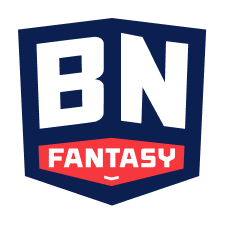- If you've been wondering how to bet on sports, you've come to the right place.
- Using The Action Network's data, sports bettors can put themselves in a position to succeed.
To be a successful sports bettor, you need accurate and reliable real-time data. If you don't know where a line opened, how it moved, why it moved and what the public and the sharps are betting, you might as well be flipping a coin.
With The Action Network's PRO product, bettors get full access to our Live Odds and Public Money trends for every game in all the major sports.
Here's how you can use our data to your advantage and make the smartest bets possible.
How to Bet on Sports and Win with The Action Network's Data
Fade The Public
Let's start with a simple premise: The public loses. Not every time, but over the long haul being on the same side as majority of bettors isn't a sound strategy. Why? Public bettors tend to rely on gut instinct, overvalue recent performance and usually gravitate toward favorites, home teams and overs. By taking a more contrarian approach, you're capitalizing on public bias and taking advantage of artificially inflated numbers. As an added bonus, you also place yourself on the side of the sportsbooks.
To fade the public on your own, focus on the "% of bets" column and look for the most lopsided games of the day (teams getting fewer than 40% of bets). But the work doesn't stop there: You also want to focus on the "# of bets" column and look for the most heavily bet games of the day (the more public action, the more contrarian value).
In the examples below, the San Diego Padres (19%, 4,629 bets) and Oakland Athletics (24%, 5,150 bets) would be the top Fade the Public plays of the day.

Follow Reverse Line Movement (RLM)
Sharp bettors (aka professional players who bet for a living) by and large have a long track record of success. One of the best and easiest ways to locate sharp action is to find games with reverse line movement: when the betting line moves in the opposite direction of the betting percentages.
To locate RLM, focus on the "open" and "current" columns. You are looking for situations where the line is moving away from the team getting the majority of bets (60% or more) and toward the team getting the minority of bets (40% or fewer).
Good examples in the screengrab below are the Pittsburgh Pirates (39% bets, +130 to +115) and San Diego Padres (39% bets, +150 to +131). Even though they're getting fewer than 40% bets, the line is moving toward them. This indicates sharp action in their favor.

Bets vs. Money Discrepancies
Another way to identify sharp action is to look for teams getting a much higher share of money compared to bets. This means that the bigger, sharper wagers are on that team, while the opponent is getting more of the $5 bets from Average Joes. To locate the best discrepancy plays, focus on the "money %" column. The wider the discrepancy, the better.
Again, you'll want to factor in the "# of bets" column, too. The money % number becomes more significant as the sample size of bets grows.

Weigh All Factors
The most valuable plays are the ones that combine both contrarian value, sharp action and have a large number of bets. Search for games that check off at least two of the three boxes: fade the public, reverse line movement, more money than bets. If a team has all three, that's even better.
Remember
The betting market is fluid. Odds and percentages fluctuate throughout the day as more action comes in. What looks like a great play at 10 a.m. might not look as valuable at 6 p.m. As a result, we recommend using The Action Network betting data as close to game time as possible. That's when the action is heaviest and the data is strongest.
Where to Bet on Sports: Best Legal Sportsbooks
Now that you have a better understanding how to spot betting value in the marketplace, where should you be looking to place your wagers? The short answer: The sportsbook with the most advantageous odds.
Check out three of our recommended books below:
























































